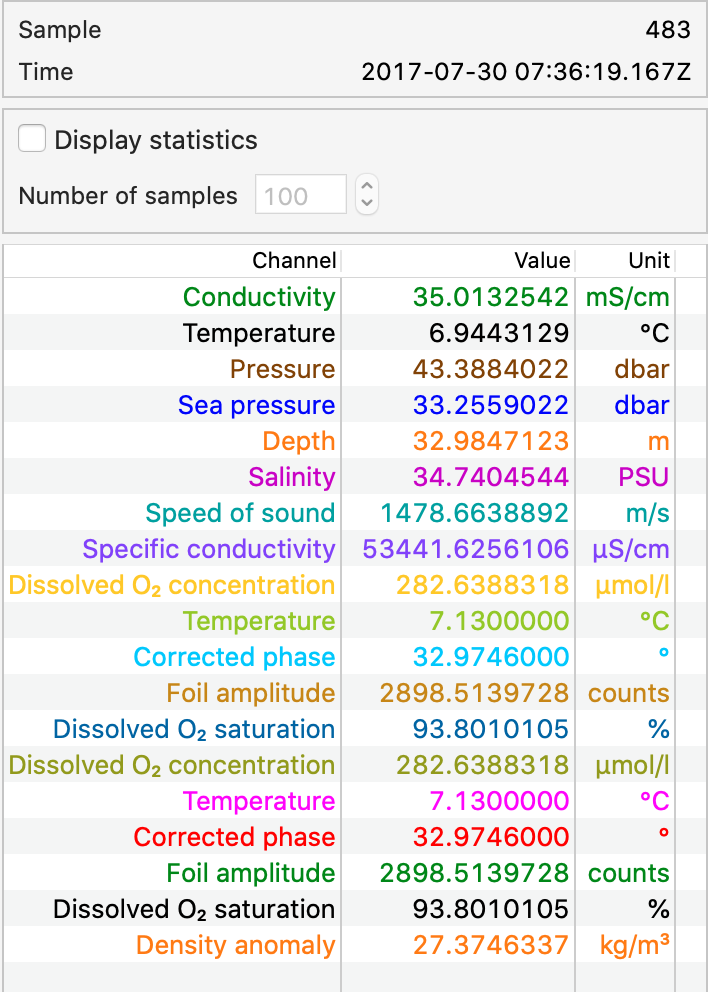Calculating seawater density from density anomaly
Density anomaly which is simply the deviation of measured seawater density from the standard (density of water) is displayed in Ruskin, provided the logger has a conductivity channel. Ruskin uses the UNESCO (EOS-80) equation to calculate the density anomaly. To get the actual measured seawater density, the density anomaly equation can be rearranged:
|
|
where σ = density anomaly and V (S, t, p) = specific volume of seawater at specific salinity, temperature, and pressure.
It can also be expressed as
|
|
where ρ S,t,p = density of seawater at specific salinity, temperature, and pressure, and 1000kg/m3 is density of freshwater.
Regarding freshwater vs seawater, UNESCO (EOS-80) is applicable to water within the range: 2 < practical salinity < 42, −2°C< temperature < 35°C. If salinity values are less than 2PSU (freshwater), then density anomaly values will not be accurate or calculated.
Considering the data below from Ruskin:
To calculate the actual measured seawater density from the derived density anomaly value that Ruskin records, we start with Equation (2) for the density of seawater.
Rearranging Equation (2), we have this equation for ρ :
|
|
At the temperature, pressure, and salinity values recorded in Ruskin from the above image, the derived density anomaly was 27.3746337kg / m 3. Therefore,
|
|
|
|

